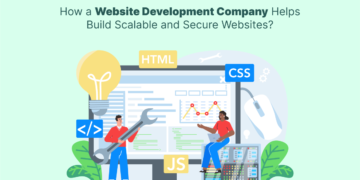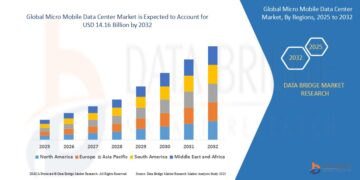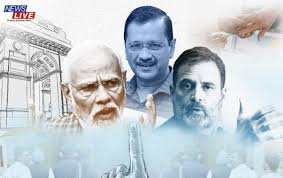As the digital world becomes increasingly busy, putting the message in front of the funnel to the right person at the right time is what sets high-performing sales and marketing against the competition. Perhaps the best way to do this is by building a messaging hierarchy—a structural methodology that maps your most important value propositions to every stage of the buying journey.
Executed well, a messaging hierarchy keeps your brand messaging consistent, facilitates more meaningful engagement, and above all, it generates conversions across the funnel—from awareness to purchase.
What is a Messaging Hierarchy?
A messaging hierarchy is a stacked structure that prioritizes your brand messaging and breaks it down by funnel stage. It dictates what to say, how to say it, and when to say it to connect with your audience at various stages in their journey.
This hierarchy begins with broad brand value propositions and filters down to tactical messages, proof points, and product benefits specific to prospects in a range of awareness and interest levels.
Why Messaging Hierarchy Matters
Without a good messaging hierarchy:
- Your team might send inconsistent or disconnected messages
- Prospects won’t be able to join the dots between your value proposition and their requirements
- Campaigns are not cohesive and don’t effectively nurture leads
In comparison, a strong messaging hierarchy enables:
- Message consistency across channels and teams
- Value communication clarity across each stage of the funnel
- Higher engagement and conversion rates
- Marketing, sales, product, and customer success strategic alignment
How to Create a Messaging Hierarchy That Converts Along the Funnel
Step 1: Define Your Brand’s Core Story
At the top of your messaging hierarchy is your brand story—this is the high-level “why” of your business.
Ask:
- Why are you a company?
- What is the problem or mission you are solving?
- What is your unique point of view of the space?
- What difference do you empower your customers to make?
Your core narrative must be inspiring and emotionally resonant. It anchors all other messaging and is the hidden theme behind each article, pitch, or ad.
Example:
- Company: A SaaS company offering workflow automation
- Core Story: “We help growing businesses reclaim time and scale smarter by automating time-consuming work—so their humans can focus on what counts.”
Step 2: Identify Your Target Personas and Segments
Determine who you’re speaking to before messaging. Each might have different messaging angles.
Create separate personas that describe:
- Roles and responsibilities
- Pain points and challenges
- Goals and success metrics
- Buying triggers and objections
- Preferred channels and decision-making behaviors
Segmenting your audience allows you to build messages that are relevant and personalized-feeling—enabling engagement and conversion.
Tip:
Don’t overthink your personas. Target 3–5 clear-cut profiles that represent your primary buyers.
Step 3: Map the Customer Journey
An effective messaging hierarchy reflects the buyer’s journey, typically consisting of three broad stages:
Top of Funnel (TOFU) – Awareness
The prospect is just starting to become aware of an issue or opportunity.
Message goal: Inform and build trust.
Middle of Funnel (MOFU) – Consideration
The buyer is researching solutions and comparing options.
Message goal: Position your solution as the best fit.
Bottom of Funnel (BOFU) – Decision
The buyer is ready to buy but needs reassurance.
Message goal: Eliminate doubt and nudge action.
Outline what each persona is thinking, feeling, and seeking at each stage. This gives your messaging clear direction and context.
Step 4: Create Message Layers by Stage of the Funnel
Now you can construct your hierarchy—from broad to narrow. Here’s how to structure it:
1. Brand-Level Messaging (TOFU)
Focus on high-level values and emotional connection.
Ask:
- What is the grand mission that drives your brand?
- How do you stand out from the norm?
- What customer outcomes do you enable?
Sample Message:
“Expanding businesses need as nimble tools as they are. Our platform is simple to work with to streamline mundane work so your team can just do its best.”
2. Category and Solution Messaging (MOFU)
Position your product as the category leader or unique solution.
Ask:
- Why is your category solution irreplaceable?
- What is your point of differentiation or innovation?
- What are the pain points that you solve better than anyone else?
Example Message:
“Most automation platforms are for IT departments. Ours is for everyday business users—no coding, no training wheels, just drag-and-drop simplicity.”
3. Product and Feature Messaging (BOFU)
Specificity is king at the bottom of the funnel. Highlight product features, use cases, and proof points.
Ask:
- What features are most important to your target personas?
- How does your product specifically address their exact issues?
- What’s your competitive advantage?
Example Message:
“Cut processing time by 70% with pre-built automation templates tailored to HR, finance, and customer support teams.”
Step 5: Align Messaging with Content and Channels
Once your hierarchy is built, map your messages to specific content formats and distribution channels.
Top of Funnel
- Messages: Thought leadership, vision, mission
- Formats: Blogs, social media, videos, podcasts, webinars
- Channels: Organic social, SEO, paid awareness campaigns
Middle of Funnel
- Messages: Differentiators, solution benefits, case studies
- Formats: Ebooks, comparison guides, product webinars
- Channels: Email nurture, retargeting, gated content
Bottom of Funnel
- Messages: Pricing, ROI, proof, testimonials
- Formats: Demos, sales decks, product trials, one-pagers
- Channels: SDR outreach, demo calls, customer testimonials
This alignment ensures each prospect is presented with the right message based on their journey stage.
Step 6: Engage Cross-Functional Teams
Your messaging structure shouldn’t be siloed. Involve stakeholders across marketing, sales, product, and customer success to ensure:
- Buy-in from all stakeholders involved in taking the message out
- Consistency of tone, value propositions, and claims
- Hard-won understanding of customer objections and feedback
Develop enablement assets like:
- Messaging playbooks
- Sales battle cards
- Email scripts and landing page templates
- Visual brand assets for designers
When teams are on the same page, customers have a unified experience that builds trust and drives conversion.
Step 7: Test, Measure, and Optimize
Messaging is never “finished.” The market evolves, buyer needs change, and competitors emerge. A messaging hierarchy needs to be tested and optimized over time.
Key ways to test your messaging:
- A/B test subject lines and landing page copy
- Analyze click-through and conversion rates by campaign
- Get qualitative input from demos and sales calls
- Examine search data and chatbot queries
Apply what you discover to refine your hierarchy. Double down on winners. Cut the losers.
Small copy tweaks can drive enormous lift in conversion when done methodically.
Real-World Example: Slack’s Messaging Evolution
When Slack initially launched, its messaging was feature-oriented: messaging, channels, file sharing. When it started to scale, its brand-level messaging shifted to emphasize transformation—less email, improved productivity, more efficient teamwork.
Slack’s hierarchy shifted:
- Brand story: “Be less busy”
- Solution positioning: A better way for teams to communicate
- Product messaging: Channels, search, integrations, simplicity
- Proof points: Case studies, metrics (e.g., “32% fewer meetings”)
This shift empowered Slack to evolve from a simple chat tool to a pillar of modern work culture.
Final Thoughts
A well-structured messaging hierarchy is the backbone of successful campaigns, seamless customer experiences, and sales conversations that close.
By aligning messaging and the mindset of your audience at each point in the funnel—and building on top of it, beginning with mission through to features—the outcome is a cohesive, engaging, and conversion-driven narrative.
Investment in your messaging hierarchy is not a branding exercise—it’s a growth strategy.
TL;DR: How to Create a Messaging Hierarchy That Converts
- Define your brand’s fundamental narrative
- Identify buyer personas and segment the audience
- Map the buyer journey and funnel stages
- Layer your messaging from brand to product level
- Align each message with content formats and channels that are relevant
- Engage teams from across your company
- Test messaging repeatedly and optimize based on data
Build it once. Improve it many times. Use it everywhere.























